
Lex Davison and passenger – probably Lyndon Duckett – at Fishermans Bend, Melbourne, unleashing all of the power and torque of his 7.1-litre supercharged, straight-six 1929 Mercedes Benz 38/250 SSK, chassis #77643. It’s March 13, 1949.
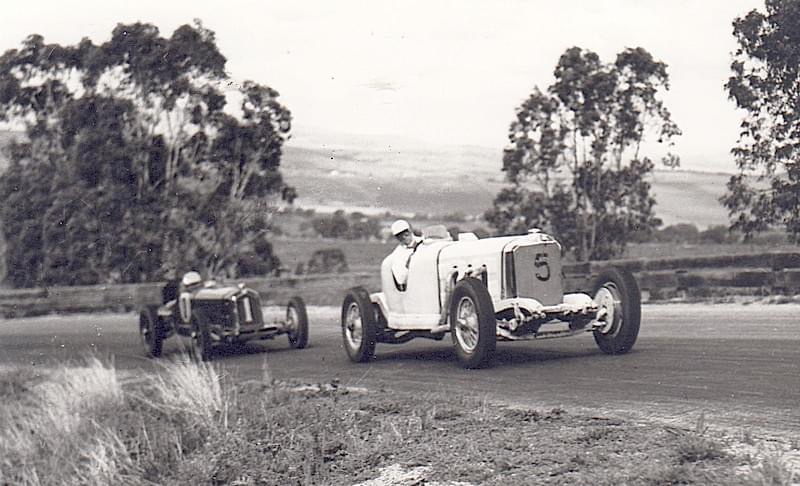
Davison raced the car from 1946-49 and is shown here in front of Alf Barrett’s Alfa Romeo 8C 2300 Monza through Quarry during his highly competitive run into third place in the 1947 Australian Grand Prix at Mount Panorama, Bathurst.
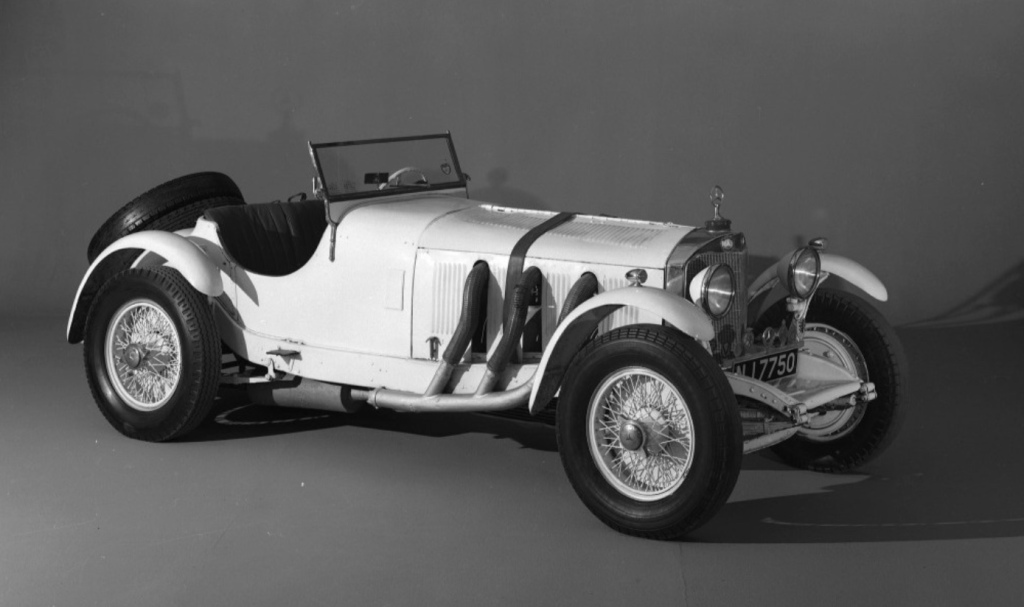
Production numbers and Technical…
How Davison’s car came to Australia is still a bit of a mystery, but a West Australian, a Mr Everett imported it and sold it to Eric MacKay, more of this anon. #77643 was one of 33 SSKs, one model of four of this stunning series of S, SS, SSK and SSKL Mercedes Benz built between 1927 and 1933.
The production numbers according to Mercedes Benz were: S-Sport 146 units built until September 1928, SS-Super Sport 111 units until September 1933, SSK-Super Sport Kurtz (short – the wheelbase of theses cars is 2950mm) 33 units between 1928 and 1932.
The numbers of the SSKL-Super Sport Kurtz Licht (short light) cars produced is not quoted by Mercedes publicly, “it is extremely difficult to obtain a precise record of the production numbers, since, already at that time, chassis were being shortened and provided with different engines.” A perfect situation for fakers of course.
Racing triumphs of the cars include the 1927, 1928 and 1931 German Grand Prix, the Avus races in 1931-32, the Eifel race in 1931, the 1929 Tourist Trophy, the Irish Grand Prix in 1930, and Spa 24 Hours and Mille Miglia in 1931. Despite their size the cars were competitive in the hills too, winning the European Hill Climb Championships in 1930-31 and the ’32 German Alpine Championship…and plenty more.
The U-section pressed-steel frame chassis cars were designed by Ferdinand Porsche who had succeeded Paul Daimler as chief engineer of Mercedes in 1923, three years before the company amalgamated with Benz. The six-cylinder SS 38/250 Mercedes-Benz debuted in 1928 as a 7.1-litre development of the 6.8-litre S model launched in 1927. It was both exclusive and expensive, the SS retailed at 35,000 Reichsmarks (£2350) with factory tourer bodywork.
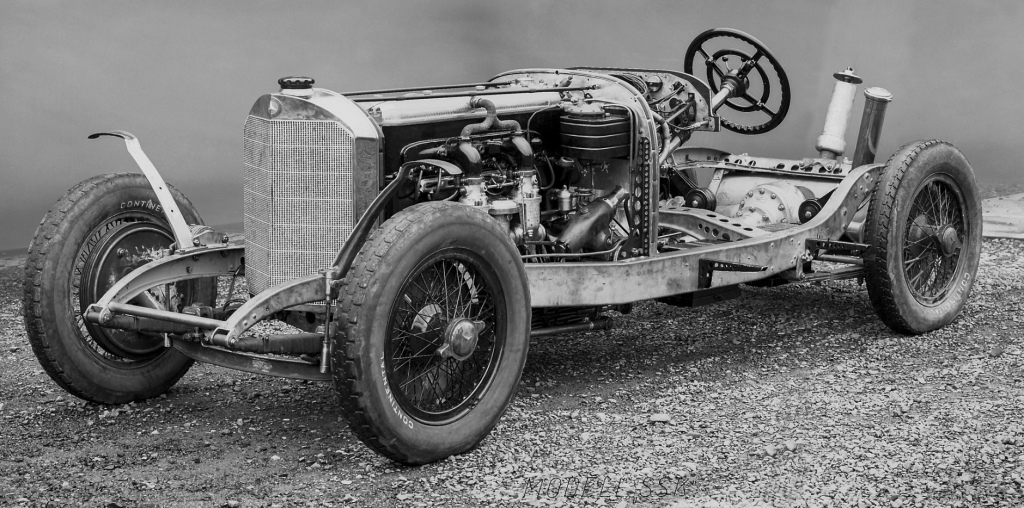
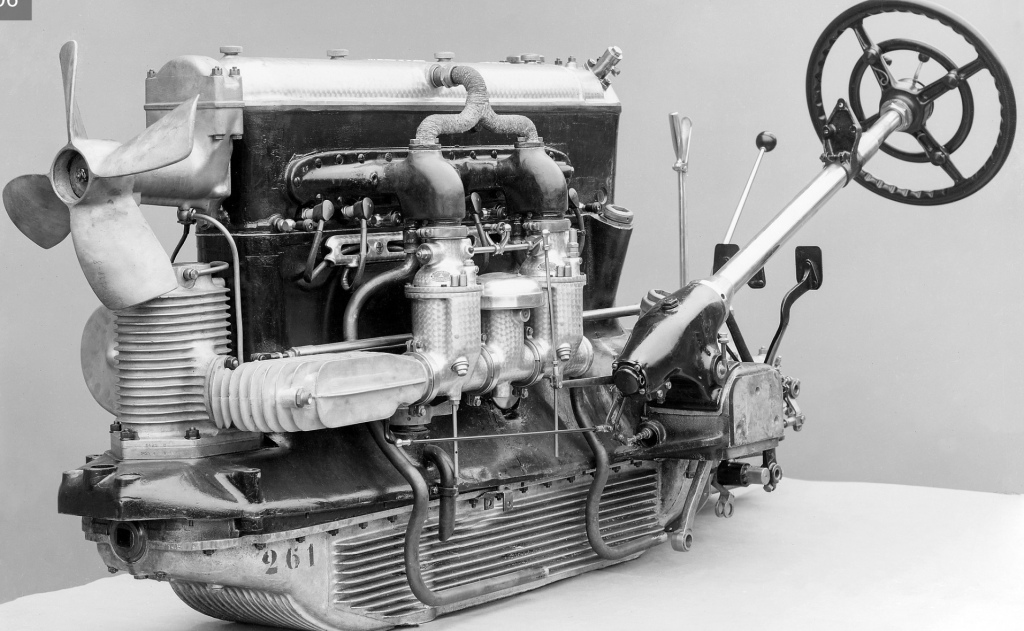
The Mercedes M06 7065cc engine was a long-stroke – 100mm bore, 150mm stroke – SOHC, two-valve, 225bhp @ 3300rpm straight six, fitted with twin-plug ignition: one plug was fired by the magneto and one by the battery.
The big, thirsty beast was fed by twin-Mercedes updraught annular-float carburettors and was Roots supercharged. Mercedes pioneered the fitting of superchargers to road cars using technology developed for its Great War aero-engines. While other marques developed permanently-engaged superchargers that the sucked fuel/ air mixture in through the carburettor, Mercedes employed a supercharger clutched in at full throttle to boost engine power by force-feeding air through the carburettors to cram fuel and air into the combustion chambers.
This method could only be used for a few seconds at a time to aid acceleration or hillclimbing and was accompanied by a distinctive banshee wail that Motor described as a “threatening high-pitched whine that is such a joy to spectators at racing events”.
The chassis was period-typical: rigid axles and semi-elliptical front and rear springs, worm and nut steering, mechanical drum brakes at both ends, wire-spoke wheels, with wheel size 6.5/7 inches wide and 20 inches in diameter. The gearbox had four speeds and a dry, quadruple plate clutch and three alternative final drive ratios giving a quoted top speed of 188-192km/h.
The SWB SSK wheelbase was 2950mm and had tracks of 1425mm front and rear. It was 4950mm long, 1700mm wide, 1725mm high and weighed 2000kg.
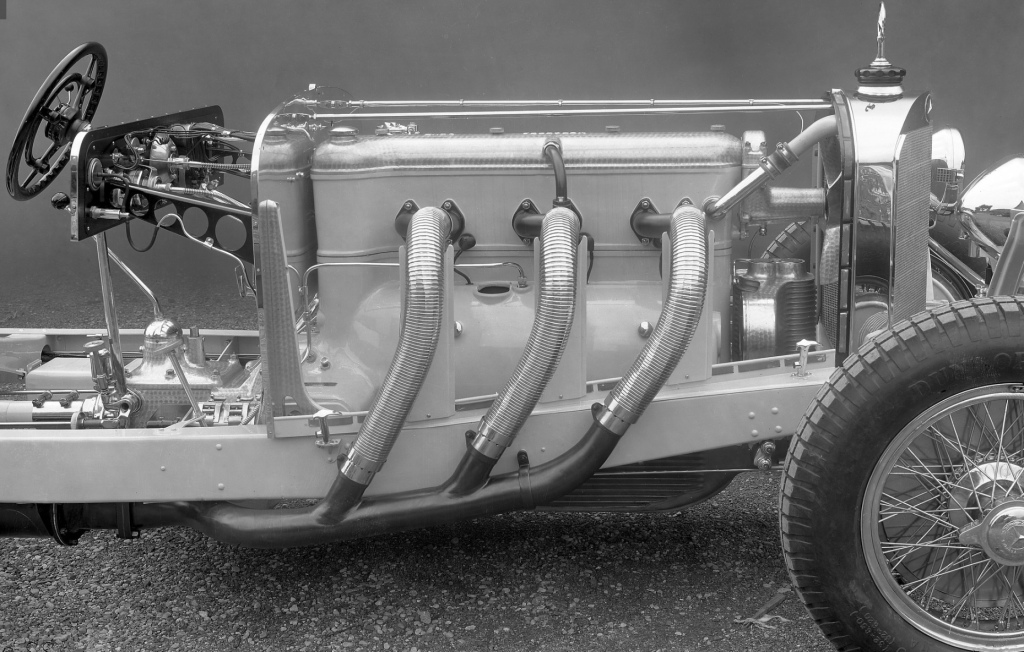
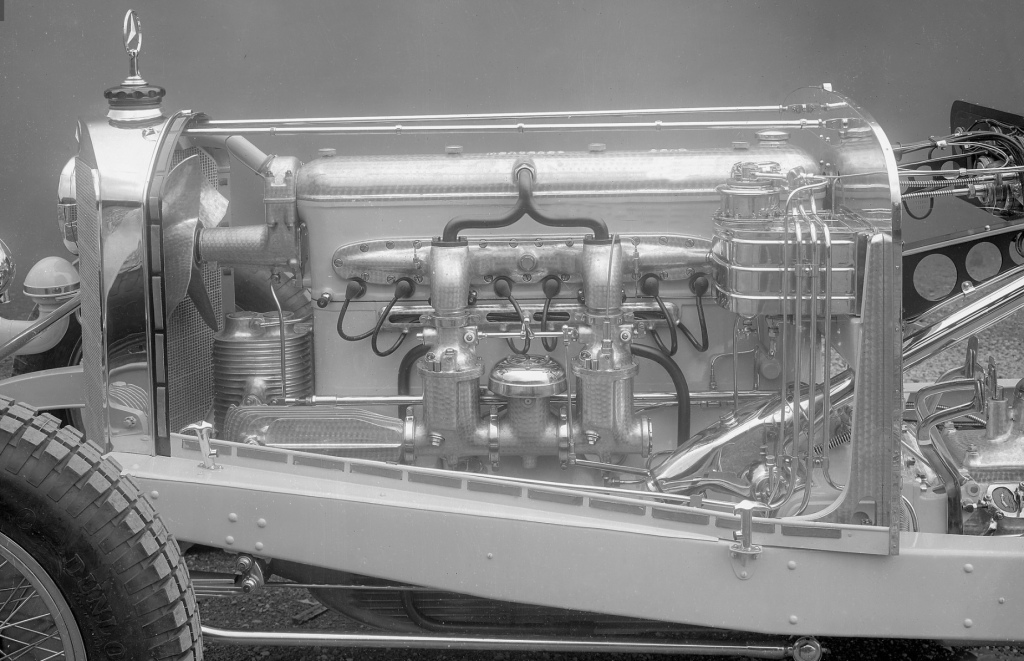
Hailed by its makers as “an ideal high performance car for sporting owner drivers”, the SS Mercedes was claimed to be the fastest sports car in the world. Tested by Motor in 1931 a fully-equipped 7.1-litre Mercedes SS 38/250, not yet fully run in, clocked over 103 mph at Brooklands despite a slight head wind.
Mercedes Benz, “The ‘SSKL’ was the glittering highlight of the legendary S-Series, which was to decisively shape the image of the Mercedes-Benz brand. In 1934, three years after the ‘SSKL’ had made its debut, it was time for the product line up at Daimler-Benz to be reshuffled. From now on success on the racetrack was in the hands of the new Silver Arrows…From mid-1927 to the beginning of 1933, the S-Series models had fulfilled the roles of sportiness and elegance in equal measure, demonstrating their credentials as genuine all-rounders capable of sustained success on both fronts.”
More on the Silver Arrows here: https://primotipo.com/2023/01/06/1934-german-grand-prix/
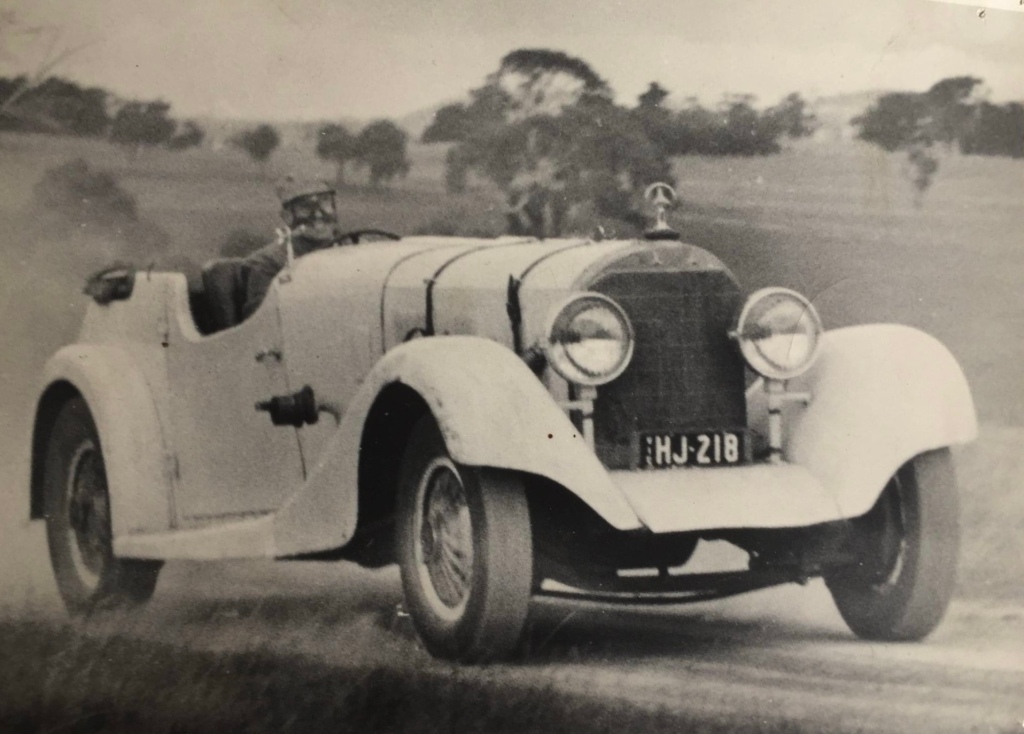
Jumbo…
Lex Davison’s interest in these big Deutschlanders commenced with this Dr Ferdinand Porsche designed 33/180 K-model Mercedes he acquired in late 1945 or early 1946.
The 6.2-litre, SOHC, six-cylinder supercharged giant was soon christened ‘Jumbo’ and is shown during a home event, literally. The Vintage Sports Car Club ran several sprint events at Killara Park, the Davison family, 500 acre farm which abutted the Yarra River at Lilydale, in the immediate post-war period.
Lex is shown competing in the first of these – his maiden competitive event – on January 13, 1946. The competitive life of this car was shortened when Davo wrong-slotted, selecting first, rather than third gear at a subsequent Killara Park meeting.
All was not lost though, as the young proprietor of the family shoe manufacturing business – Lex was appointed Governing Director of AA Davison Pty Ltd upon the death of his father, aged 22 in August 1945 – was dabbling in various cars: converting the family Alfa Romeo 6C 1500 into a biposto-racer, trading his Talbot 75 for a 4 1/2-litre Bentley, then a Bentley 4 1/2 Blower, and a 4 1/2-litre Delage Indianapolis car. Lex well and truly had the bug and the means to pursue it.
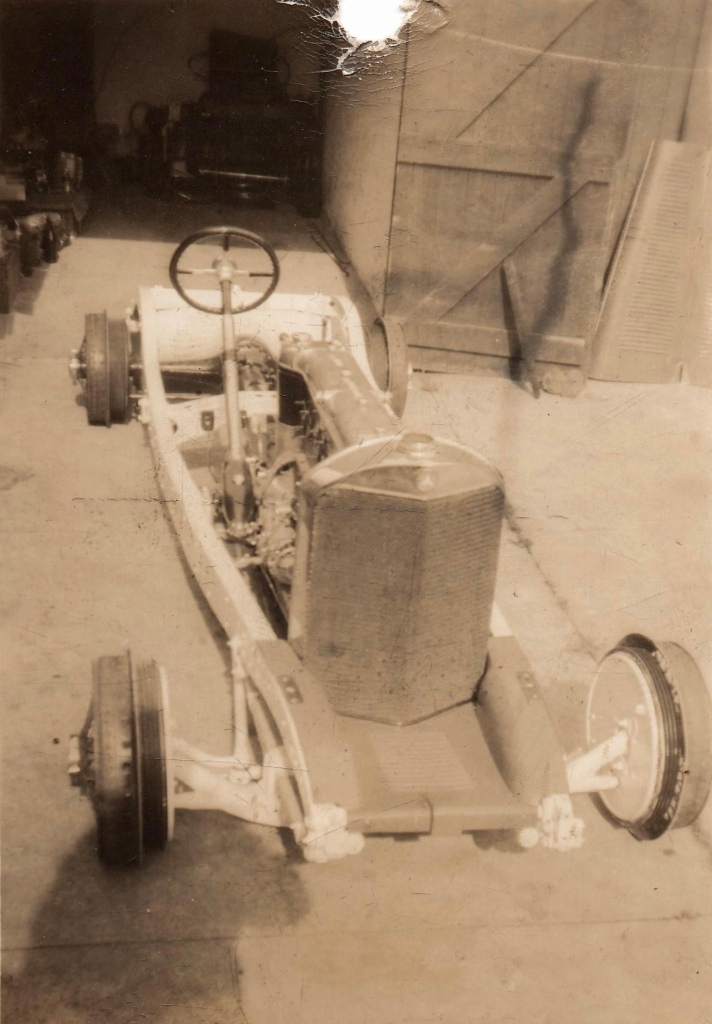
SSK #77643…
Graham Howard records in his sensational biography of Lex, ‘Lex Davison : Larger Than Life’, that the Mercedes had been a tourer which was damaged when dropped onto the wharf from a cargo-sling. Perhaps that occurred at Port Melbourne when the car was shipped from Fremantle, West Australia to Victoria.
Whatever the case, the car was acquired by VSCC member Alan Roberts, he had been slowly restoring it. A visit from Lex to encourage Alan to retain the car turned 360-degrees when Lex bought it! Davison then placed it in the care of Reg Nutt, a very capable mechanic/engineer, racer and AGP winning riding mechanic in the Phillip Island days.
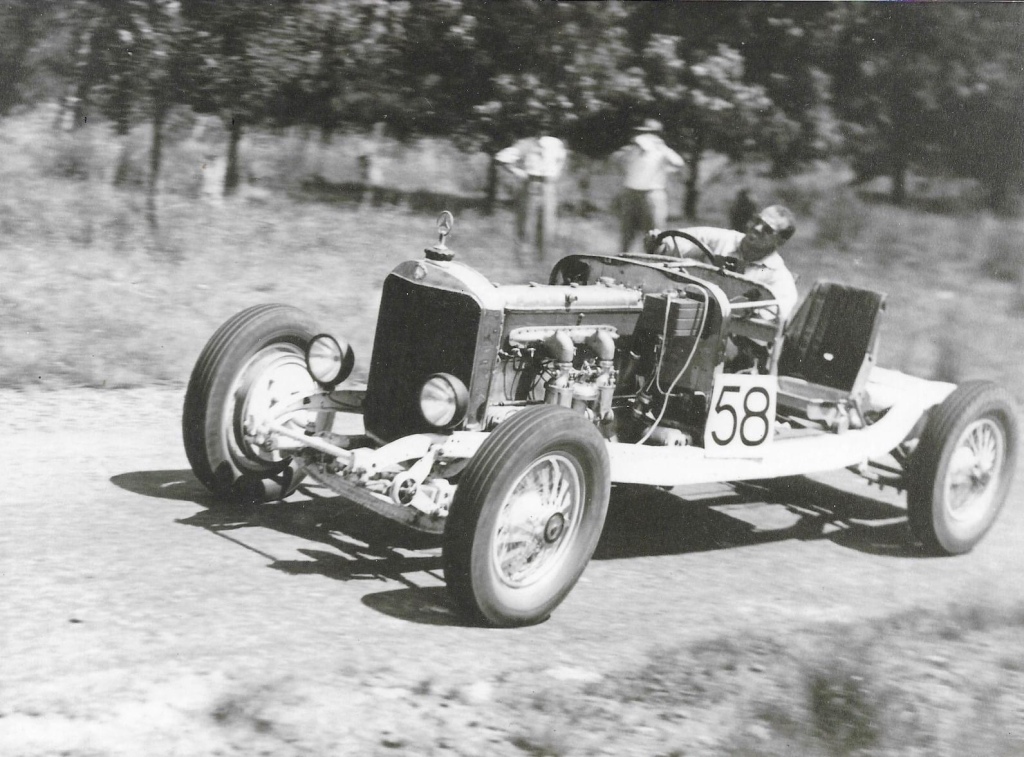
By September 1946 Nutt had the car ready to test at his Whiteman Street, South Melbourne premises. Lex first ran it in unbodied form at Rob Roy that December (above) where he won the Vintage class.
That same month he ran it in a VSCC trial, by the time the car was entered for the January 1947 race at Ballarat Airfield – Victoria’s first post-war – 77643 sported a short, boat-tailed two-seater body built by Bob Baker. Howard records that at that time Baker was working out-back of Nutt’s workshop and would later become the doyen of Victorian panel-bashers; the man of choice for single-seater and sportscar bodies.
Two of Lex’ fellow competitors for the next 15 years made their race debuts that weekend: Bib Stillwell and Bill Patterson, both racing MG TCs. Davison’s first circuit meeting had been aboard the Little Alfa – Lex’ fathers 6C 1500 Alfa which had been lightened and modified from a four-door sedan to two-seat sportscar – at the October 1946 Bathurst meeting where he impressed in the 20-year-old Alfa which had over 100,000 miles on-the-clock!
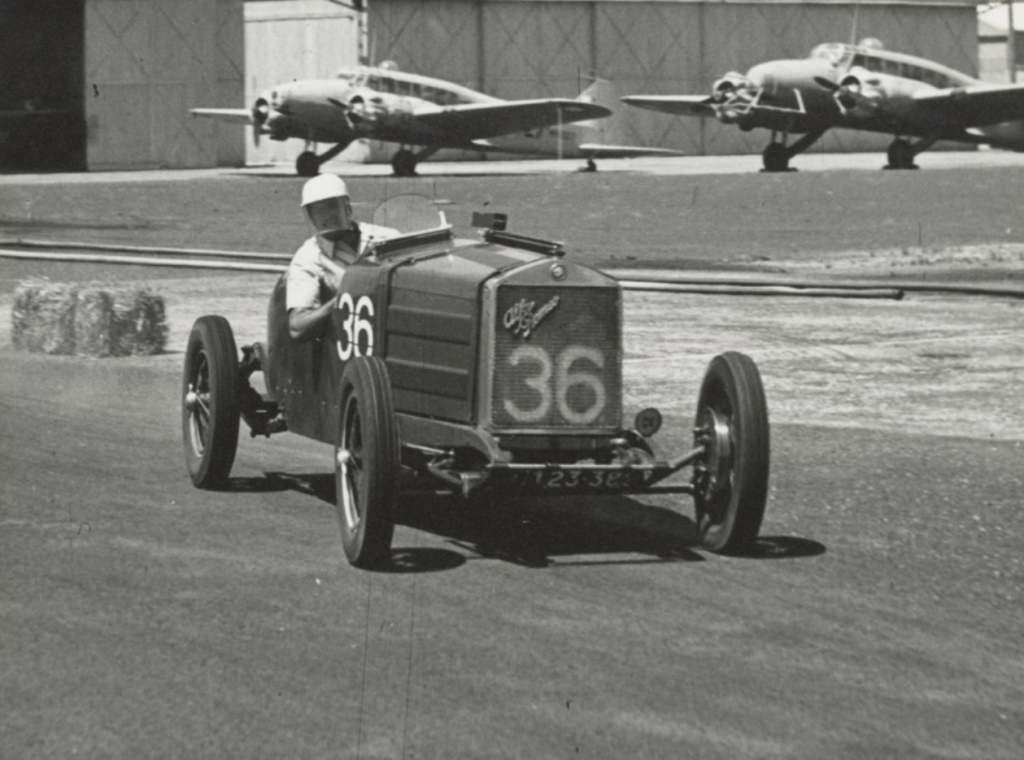
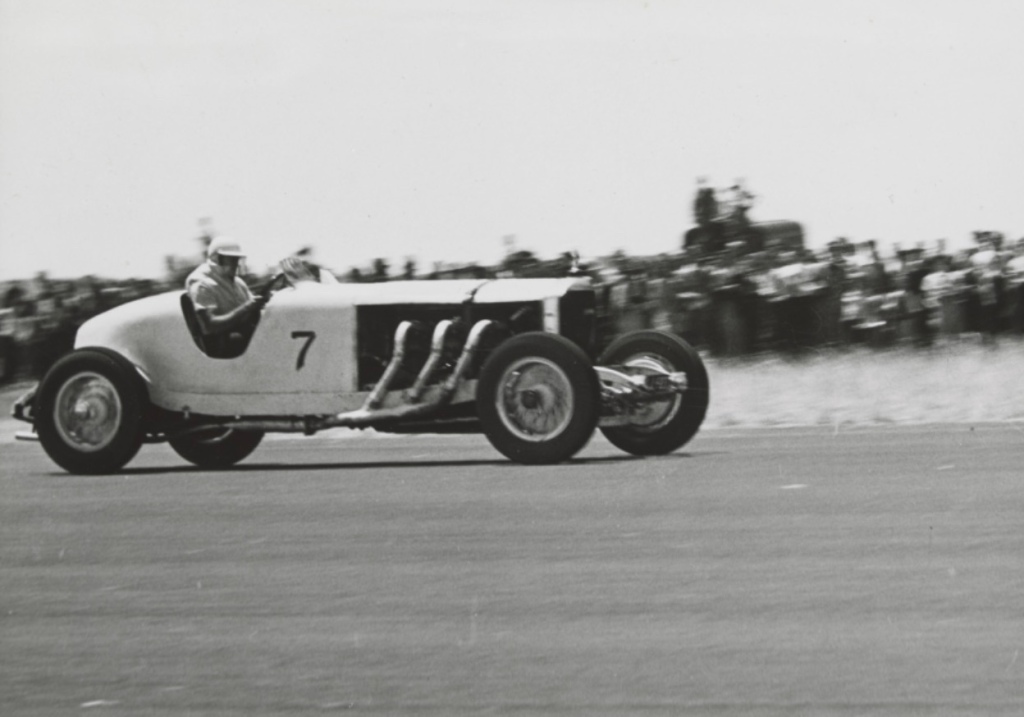
30,000 spectators starved of entertainment watched the event with “the Mercedes a handful through the corners and still running too rich. The tachometer was reading low and the top came off one piston which meant the car did not start the main race of the day,” Howard wrote. “Even so, the sight of the massive white Mercedes almost matching Barrett’s Alfa (Alf Barrett and his Alfa Romeo 8C 2300 Monza were the Australian class-combo in the immediate pre and post-war years) for top speed caused something of a stir, as did the sharp scream of its throttle-operated supercharger.”
All wasn’t lost, the Little Alfa finished the handicap in ninth, but retired from its other race with fading oil-pressure.
Reg Nutt readied the car for the 1947 Championship of New South Wales to be held on the Nowra naval air base, on the coast south of Sydney, in June. The big-beast would have been suited to the 6.8km circuit as it incorporated two straights of over 2km, it really would have had a good gallop, but the rear axle failed in practice so the car didn’t race; Tom Lancey’s MG TC won the handicap 160km event in a field of good Gold Star depth.
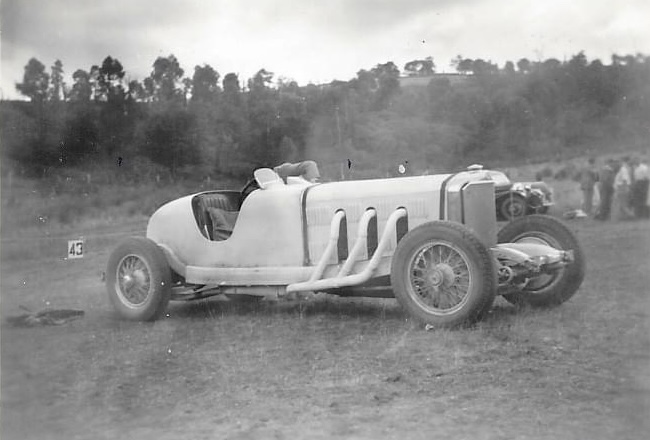
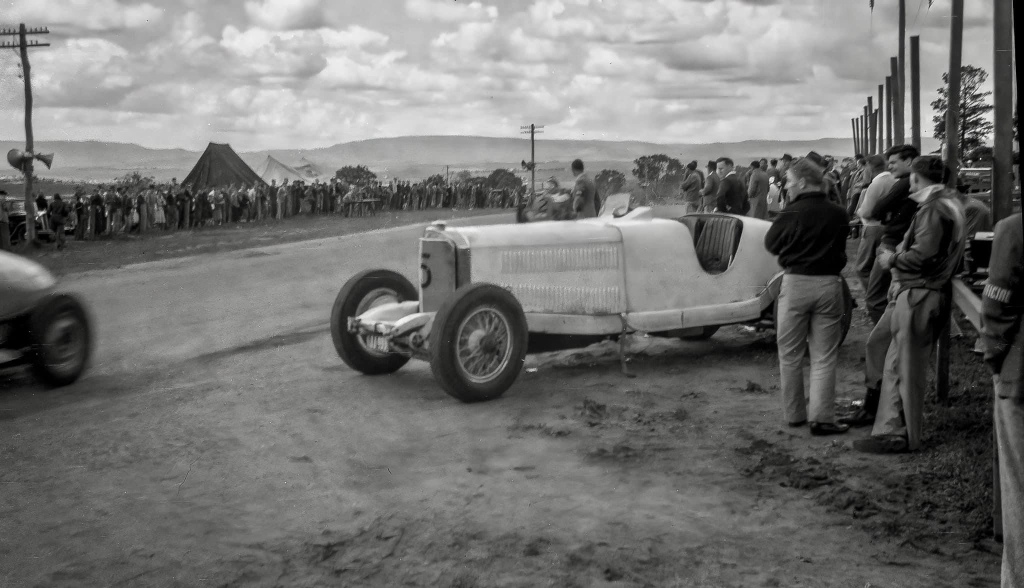
Lex had the repairs to the Mercedes done by Rex Marshall’s Monza Motors – a business established by elite level racers John Snow and Jack Saywell immediately pre-war – in Darlinghurst, Sydney.
The October 6, 1947 Australian Grand Prix was to be held at Bathurst, fittingly, the last was conducted at Lobethal, South Australia in 1939; big-balls road circuits both.
The meeting marked the first anniversary of Lex’s racing career, his first too in an AGP, a race he almost made his own with victories in 1954, 1957-58 and 1961 aboard HWM Jaguar, Ferrari 500/625 twice, and a Cooper T51 Climax.
“The 24-year-old Lex Davison, at Bathurst in October 1947, would have been judged as not much more than an enthusiastic and well-heeled Victorian youngster with an unusual car: his career to this point comprised three race starts for two finishes in the 6C Alfa, and one race start and one practice appearance in the Mercedes with mechanical trouble intervening each time. He was keen enough, and undaunted by the big Mercedes; but it was too early to know what he might amount too.” Graham Howard wrote. Nonetheless, Lex could have won the 1947 AGP.”
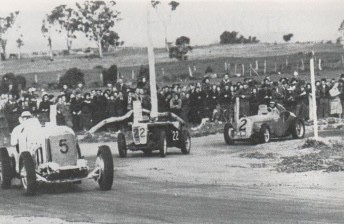
Davo was advantaged by a good handicap but that year was a bit of lottery with so many unknown combinations. Further, the handicappers, Graham wrote, didn’t believe Lex’s declared top speed of the car – 120mph, he was recorded at 119mph during the race – and the combo’s potential lap times.
Had it not been for blowback through the carburettor in top gear, which restricted the use of the supercharger to second and third gears, and a four-gallon splash-and-dash fuel stop later in the race Davison may well have won the race. Instead he was a fine third behind Bill Murray, MG TC and Dick Bland’s Mercury V8 Special. Critically, Lex’s result wasn’t due to a great handicap, it was his speed too, he did the fastest race-time and impressed all present with his skilful handling of a demanding heavy car car over 150 miles on one of the country’s most challenging circuits.
He had arrived, and with a cocktail of money, balls, brio and finesse, Lex would go far…
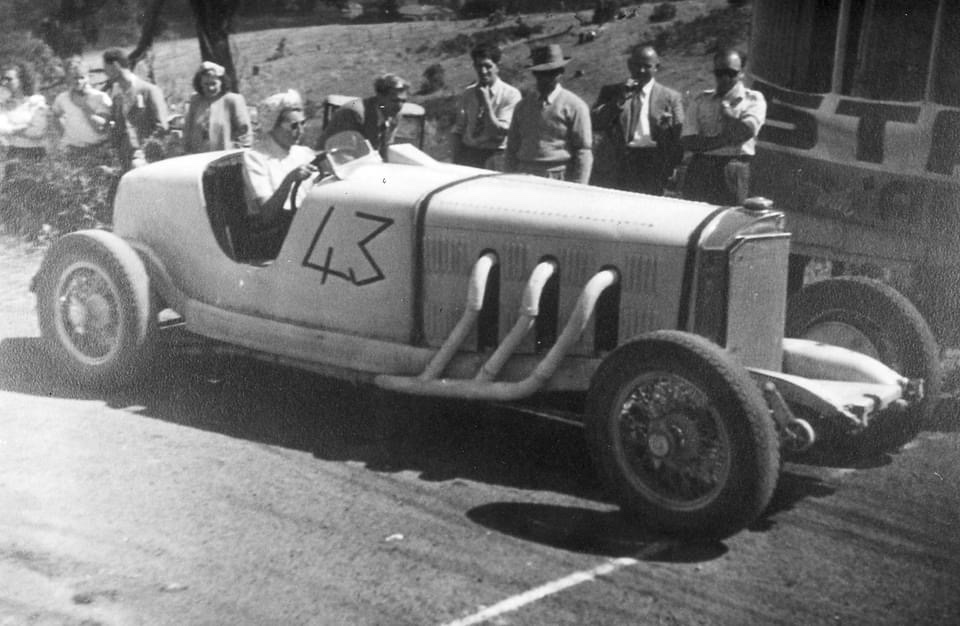
With more than a sniff of an AGP chance, before too long Davison had done a deal to buy an Alfa Romeo P3/Tipo B from Arthur Wylie, racer/engineer and founder of Australian Motor Sports magazine. Arthur had sourced chassis #50003 ex-Scuderia Ferrari from Jock Finlayson in the UK, but was left holding-the-baby when his patron, Jack Day declared that at £1650 the car had to be trouble…
Davison hoped the 1934 Italian monoposto would be in Melbourne in time for the January 1948 AGP held at Point Cook, an RAAF airbase in the city’s inner-west, in the event it didn’t. Held in stifling over 100-degree heat, the 100 mile, 42 lap race was a killer of cars and men!
John Barraclough observed Davo from his MG NE Magnette, “From behind, I saw Davison, after a dreadful spasm of front axle tramp, barge straight through some hay bales without even trying to avoid them. He raised his arms in mock helplessness. You could see he just couldn’t be bothered slithering the Merc about in an effort to miss them – plumb out of muscle he was.”
After 16 laps Lex pitted and collapsed onto the steering wheel, Lyndon Duckett took the car out as Lex was carted off for resuscitation, but within a lap the Mercedes had boiled its fuel and was retired.
Perhaps the German did it to spite Davison, his new, red, Italian love arrived three days after the GP…As Lex got to grips with the faster, more sophisticated Alfa, the Mercedes was put to one side of the garage at Killara Park, having its final race in team hands driven by Lyndon Duckett at Fishermans Bend in March 1949. There the Davison Equipe: P3, 38/250 and MG TC was cared for by Bib Stillwell, now in partnership with Derry George in Cotham Road, Kew having previously worked, Graham Howard wrote, for Reg Nutt and A.F Hollins.

These three shots (above and the two below) are of the 38/250 at Fishermans Bend on March 13, 1949, the final meeting in Davison hands. Lyndon Duckett is the fellow with an asterisk above his head.
These shots bookend the first action shot in this article taken on the same weekend – I don’t doubt that Lex is at the wheel in that first shot, probably with Lyndon alongside – and allow us to see how the car was prepared in the day. While the heavy braking and slow corners of Fishos’ didn’t suit the Mercedes it still finished both of its races in Duckett’s hands.
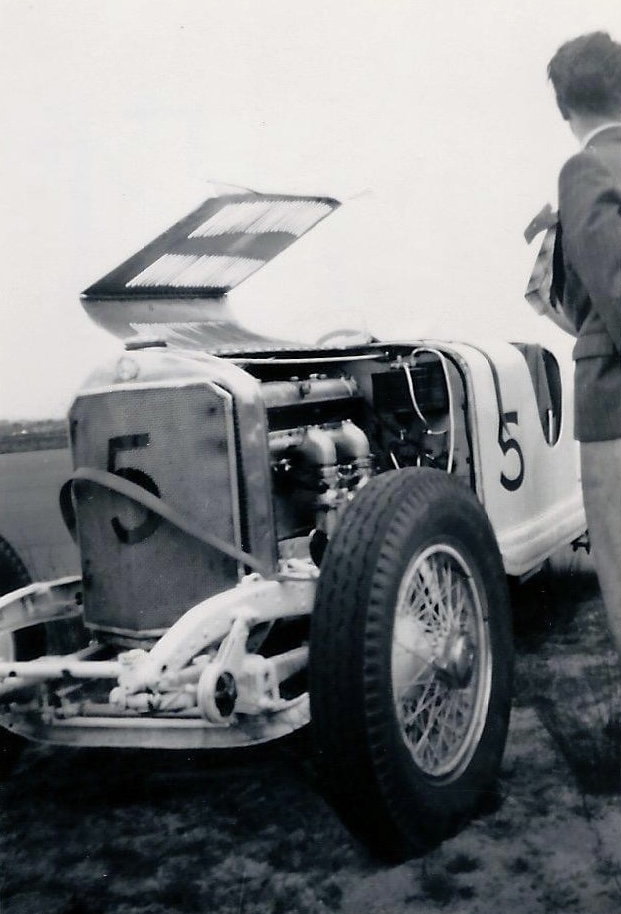
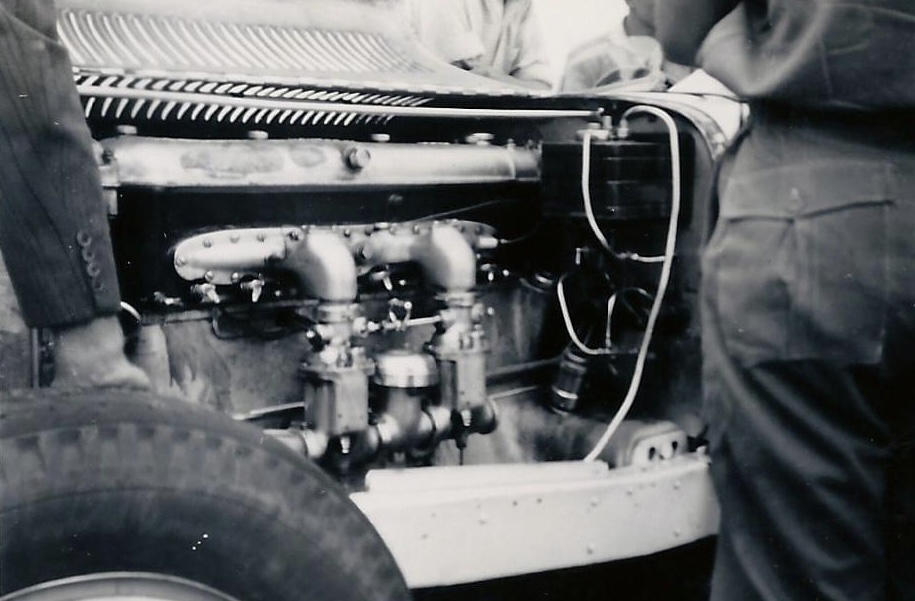
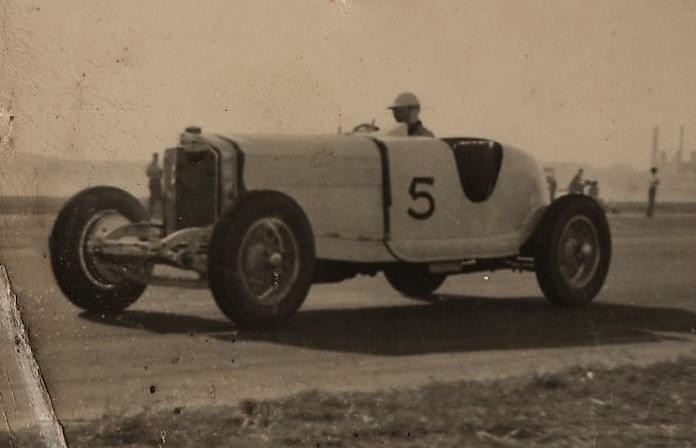
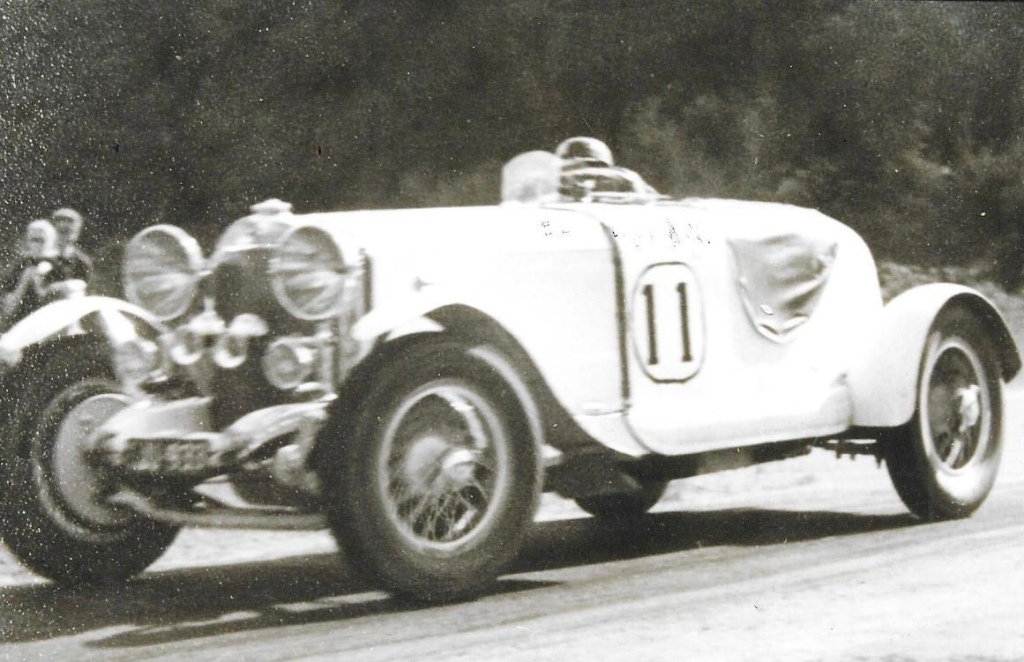
Post-Davo…
John Blanden in his ‘Historic Racing Cars in Australia’ recorded that little was heard of the Mercedes until it was advertised by a Mr Williams in the March 1951 issue of AMS. Ivo Robb was the buyer, he raced it at Ballarat in November 1951 but was unplaced.
Vin Devereaux offered the car for sale via AMS in January 1952 with Haig Hurst the buyer. He is shown above at Rob Roy in September 1955 where he was second to Ted Hider-Smith’s GN in the vintage class that weekend; note the Victorian road-rego JJ-933.
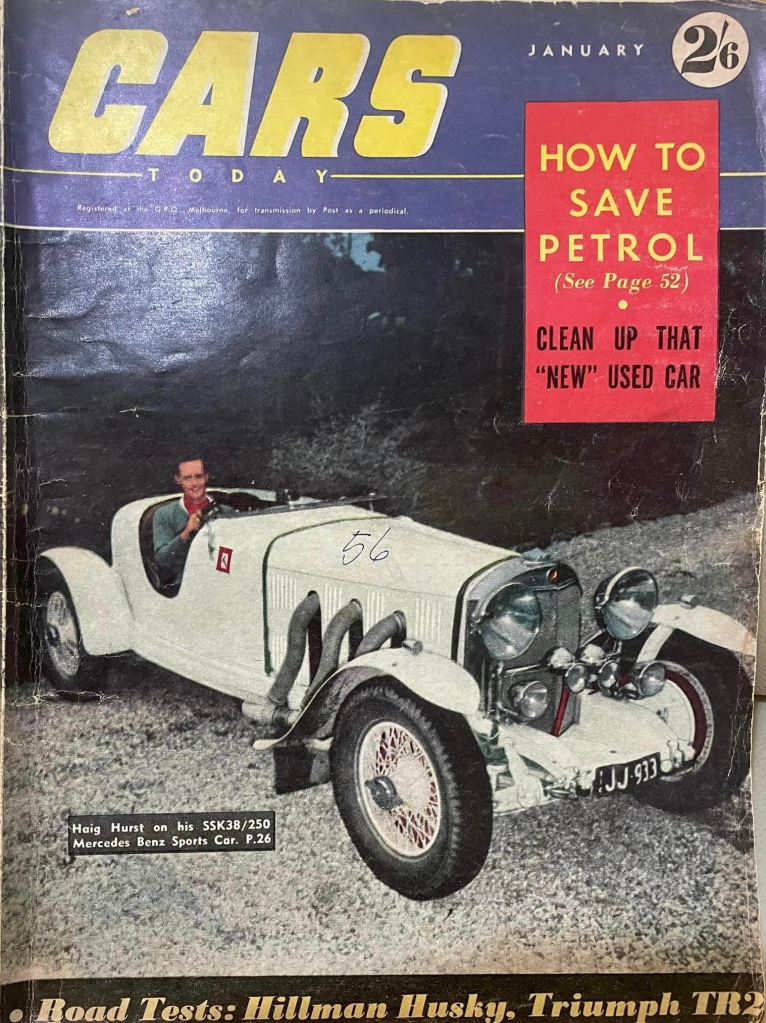
Hurst raced and ‘climbed it until 1955 when Laurie Rofe exchanged it for his Bentley Speed Six. Laurie used the car in full road trim as a fast tourer, and historic and vintage racer for about two years before selling it to Jeff Hoffert in late 1956 or early 1957.
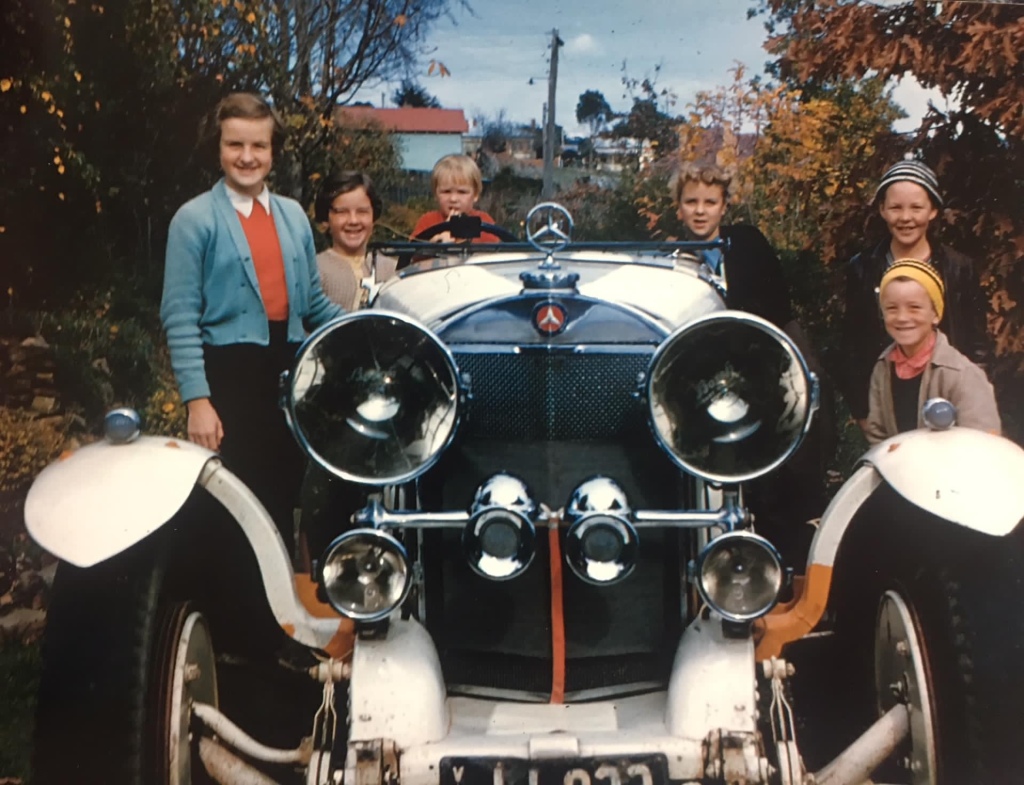
What an ignominious end for a racing car! From a near Australian Grand Prix winner to family chariot, what a chariot mind you! Every kid in the street wouldn’t have had as much cred as you did in the front seat of this thing.
David Zeunert circulated these photos of Jeff Hoffert family photos of the Mercedes Benz 38/250 at Hepburn Springs where Hoffert was a member of the organising committee of the Hepburn Springs Hill Climb, in the late 1950s.
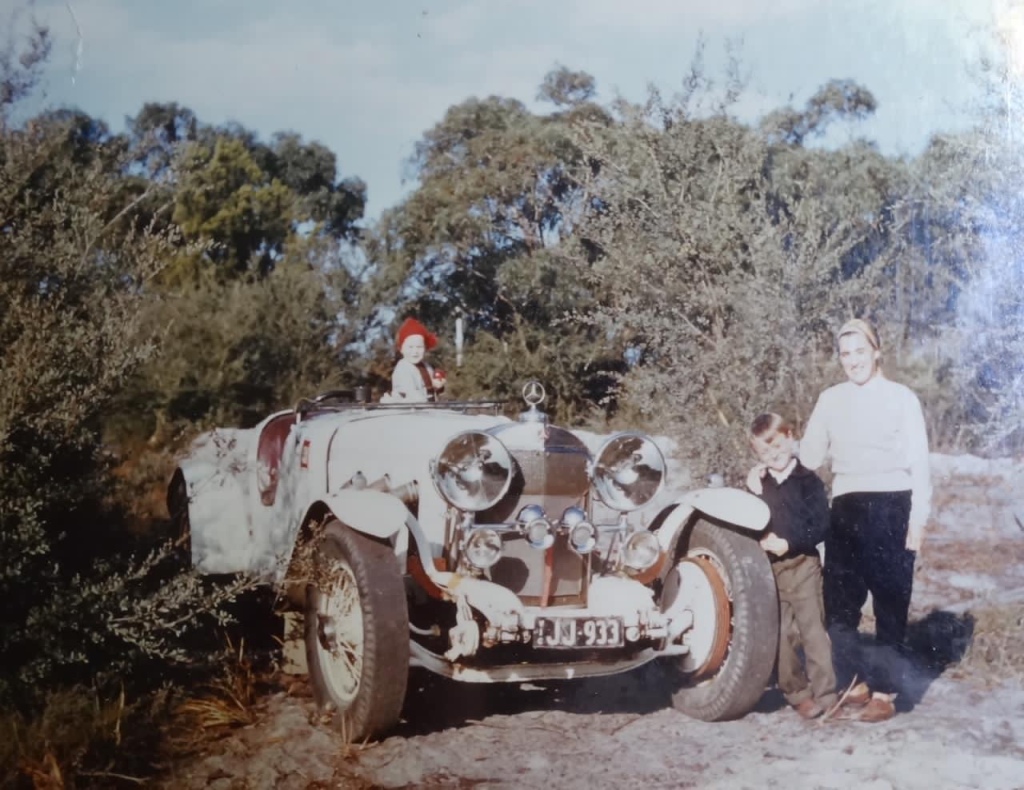
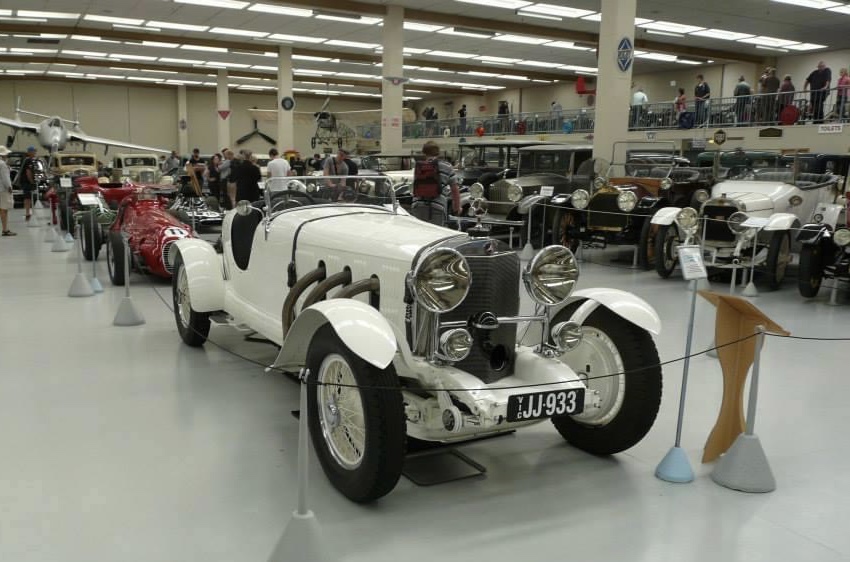
Hoffert sold the old stager to Len Southward in 1965, where it has been in his Paraparaumu, New Zealand museum since. The shot above shows it in recent times.
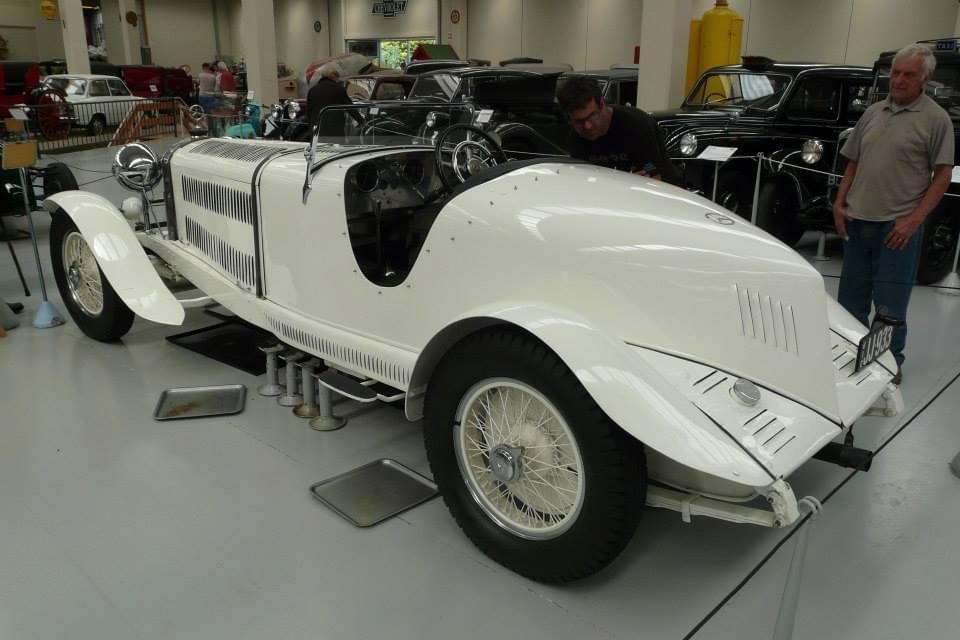
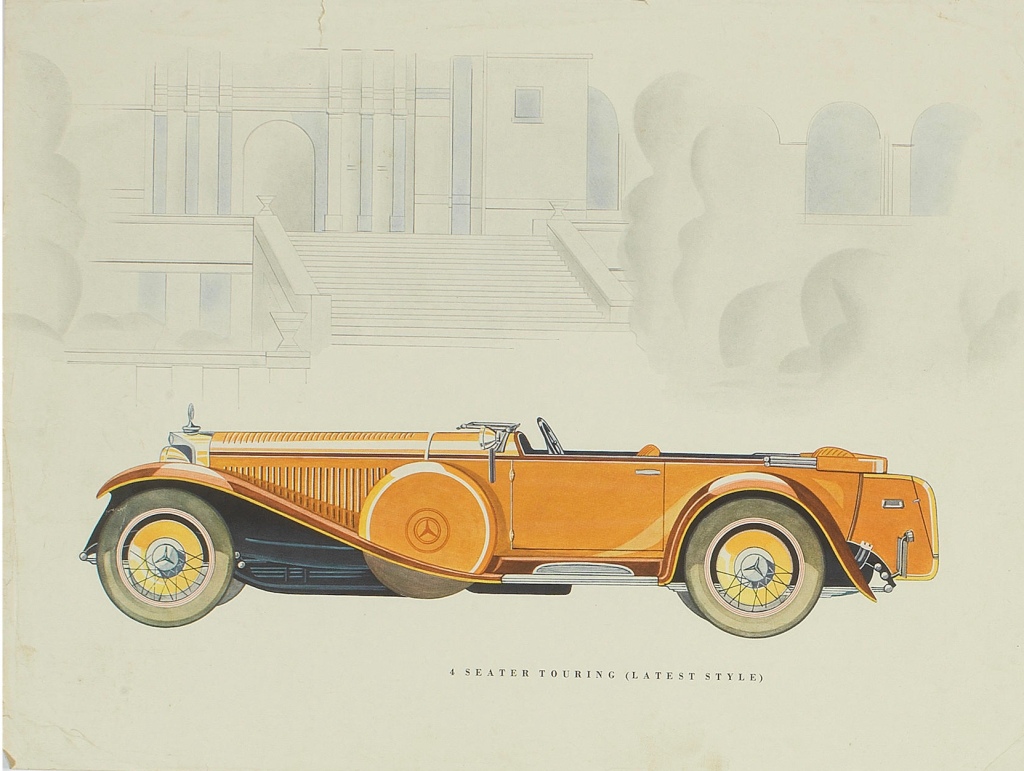
Etcetera…
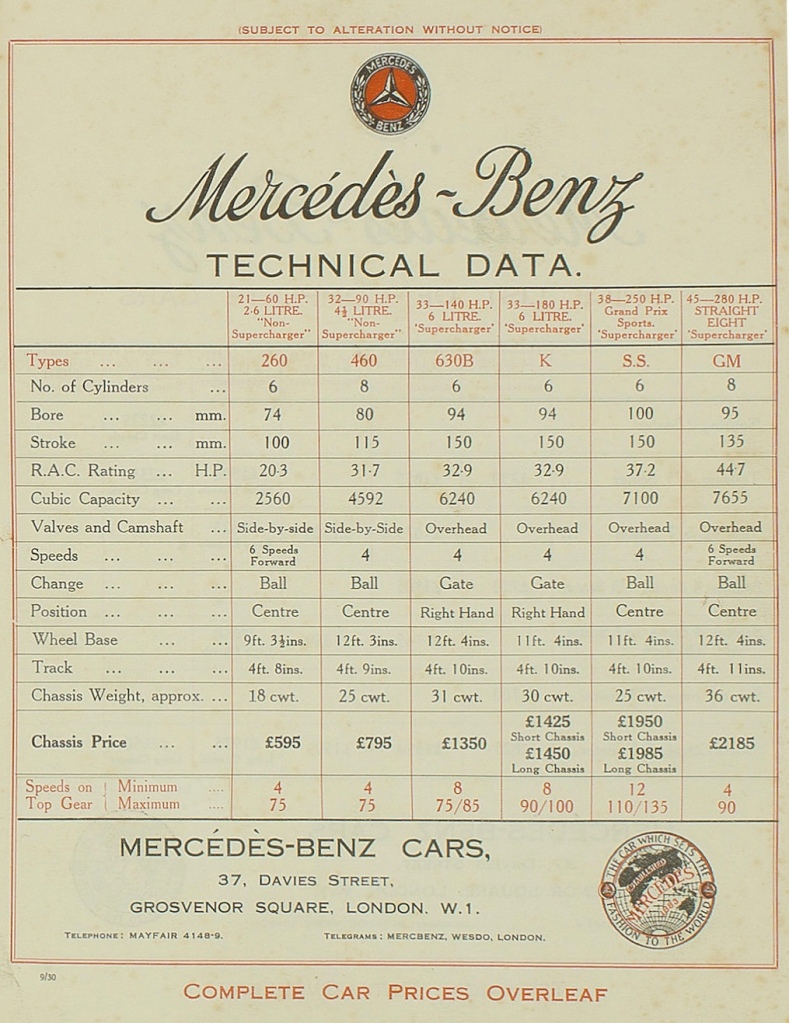
Bonhams offered this rare sales brochure for sale in 2015.
Written in English, but printed in Germany in March 1930, it comprised 20 pages, Bonhams’ generosity did not extend, unsurprising, to reproduction of it in full! Many thanks to them for including the technical specifications page online.
The feature cover car, the “4-seater touring latest style,” is a 4.5-litre 32/90 perhaps.
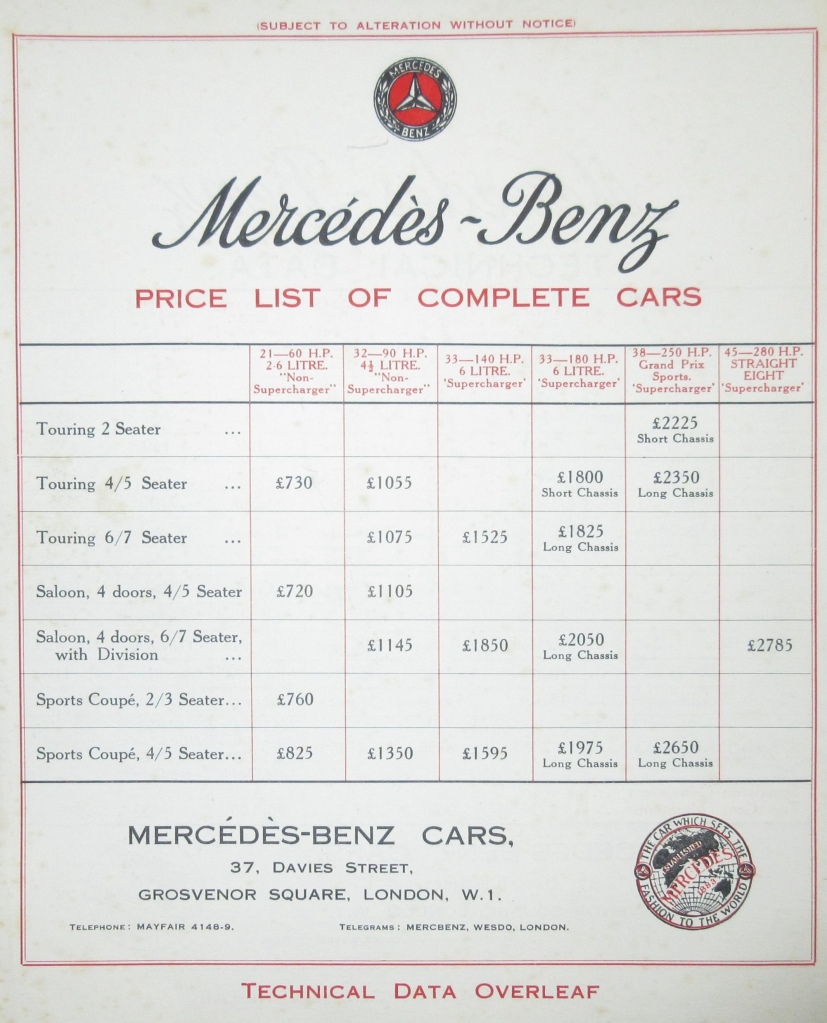
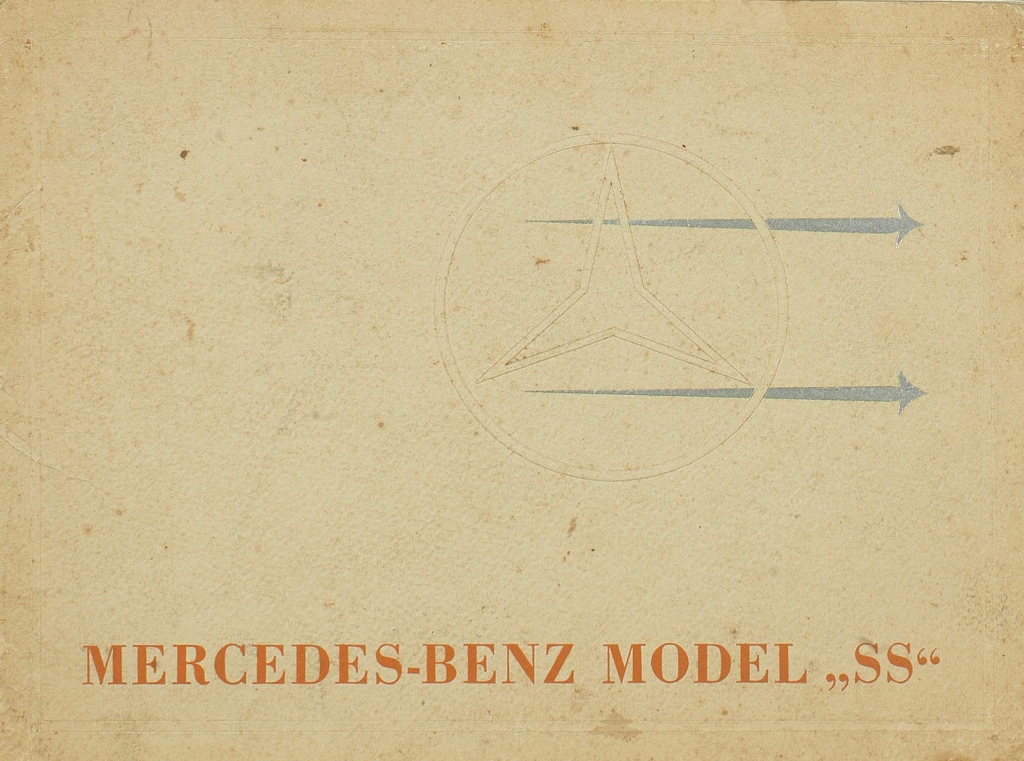
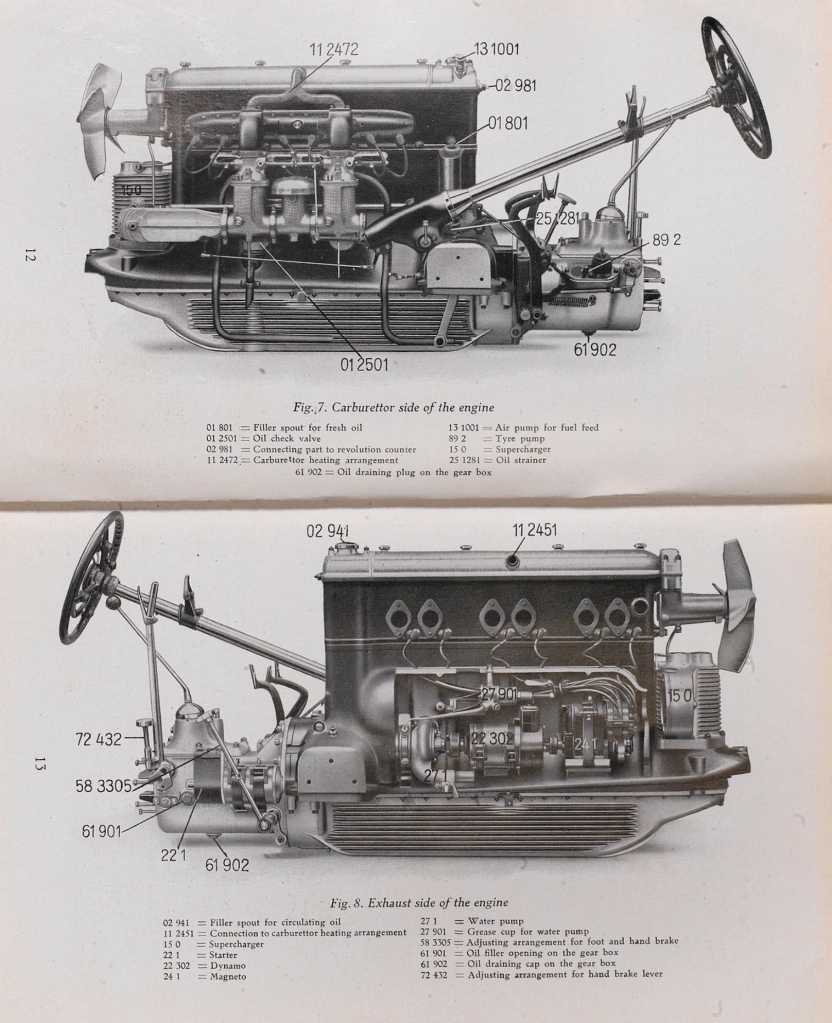
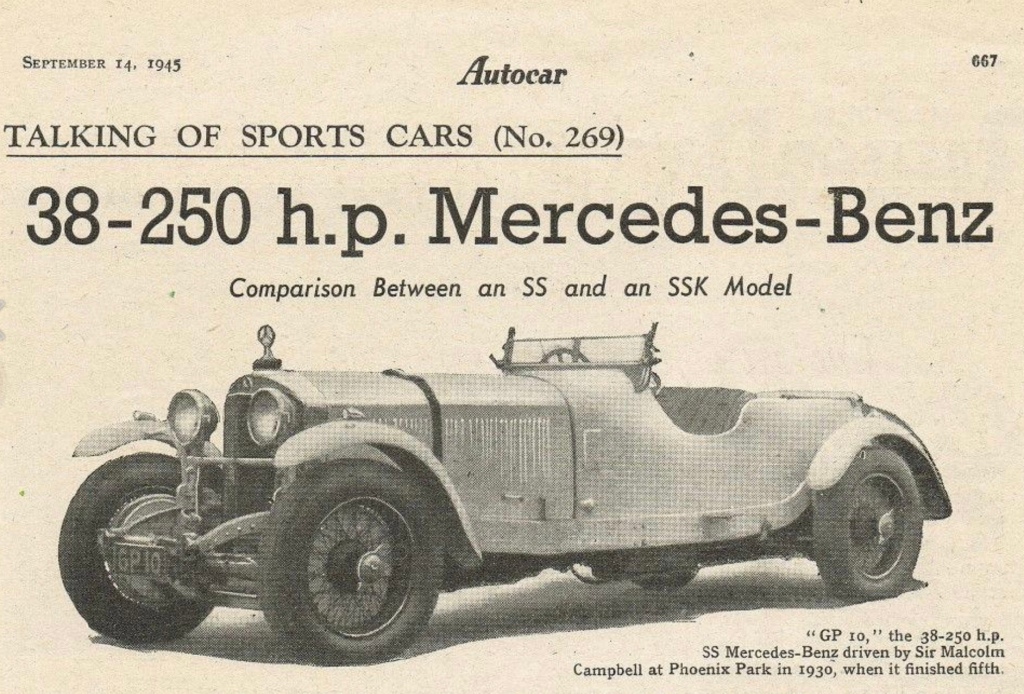
Credits…
VSCC Victoria Collection, mercedes-benz-publicarchive.com, ‘Historic Racing Cars in Australia’ John Blanden, George Thomas via State Library of Victoria, George Reed, Don Flett, Reg Nutt Collection via Greg Smith, David White Collection, David Belford Family Collection via David Zeunert, Michael Watson, James Montasell shots via the Leon Sims Collection, Bonhams, Graham Edney Collection, Stephen Dalton
Tailpieces…
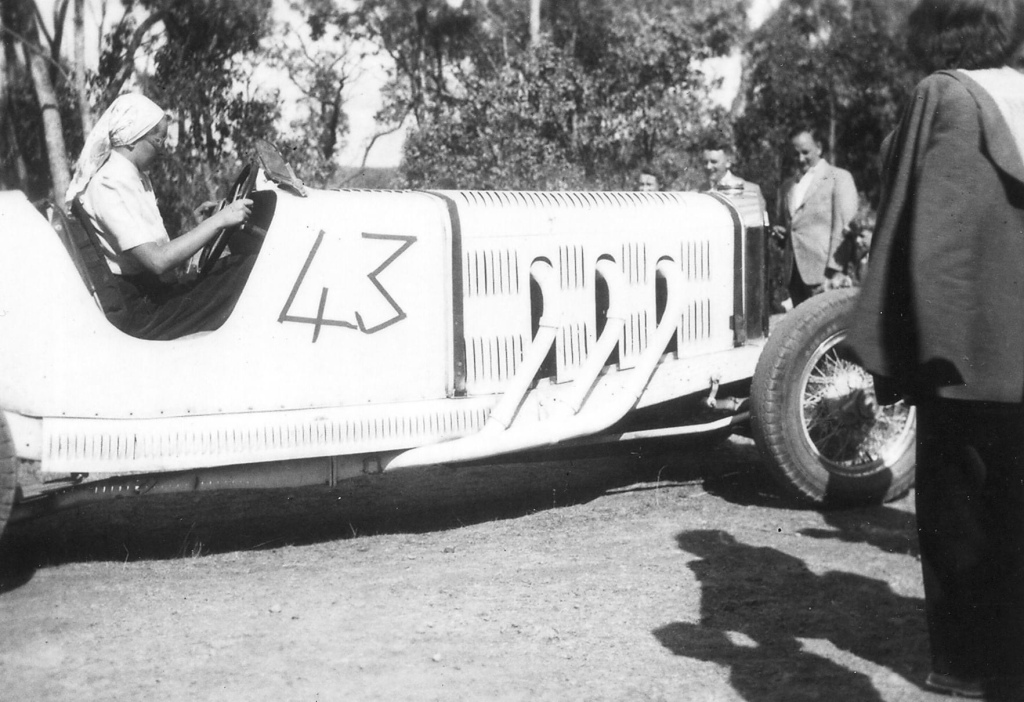
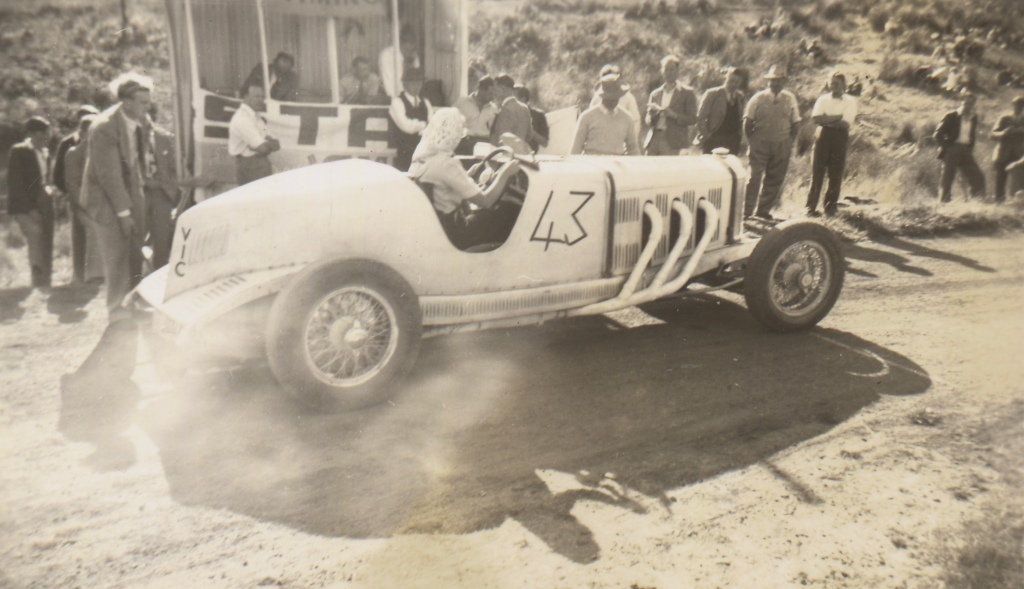
The First Lady of Australian motor racing, Diana Davison, launches the Mercedes off the line at Rob Roy #15, March 14, 1948.
Finito…








